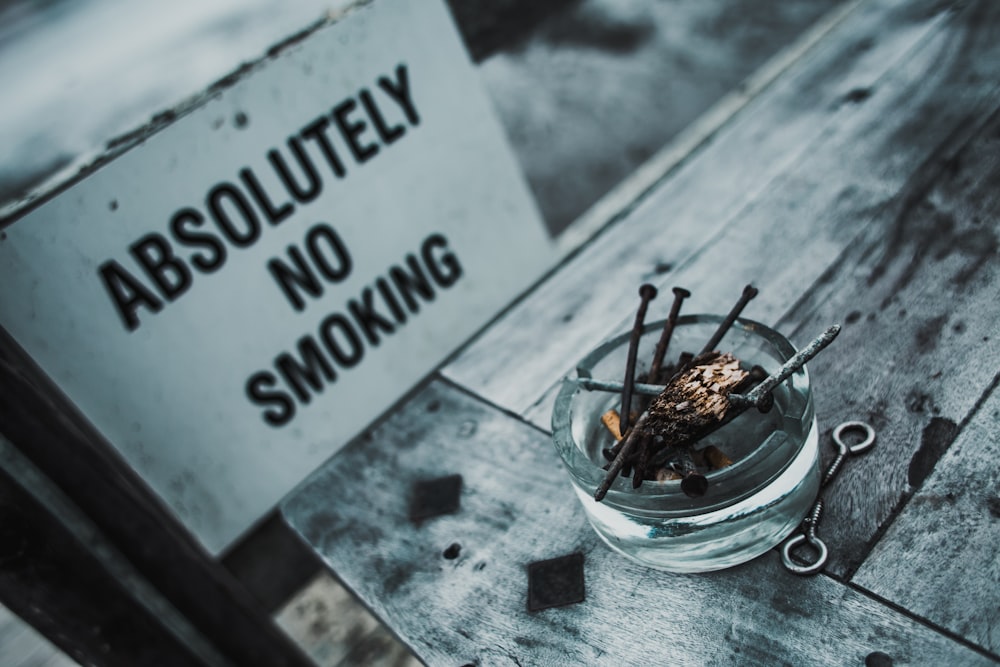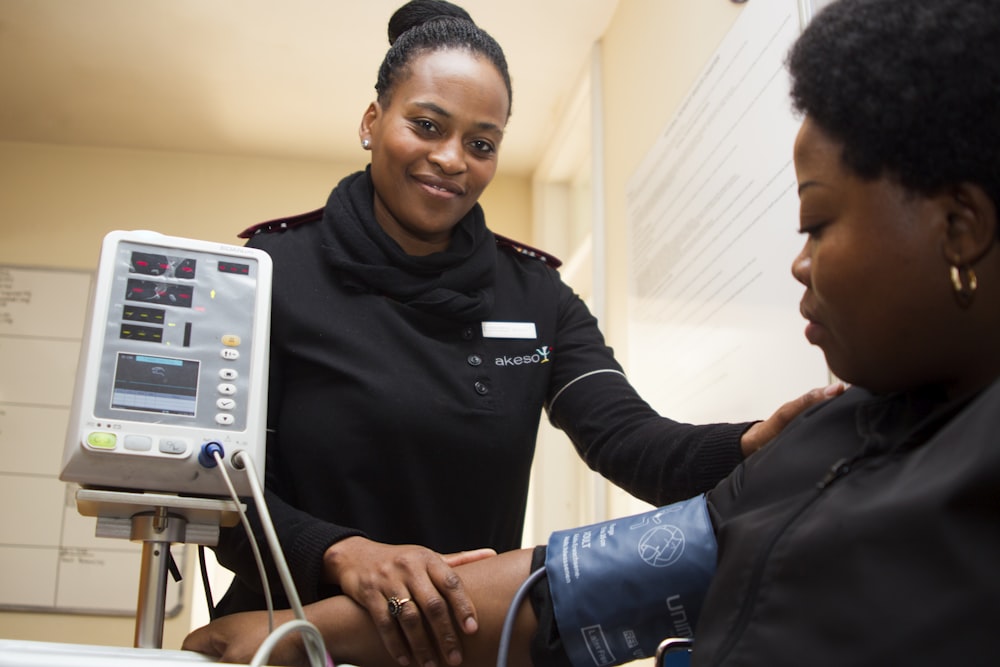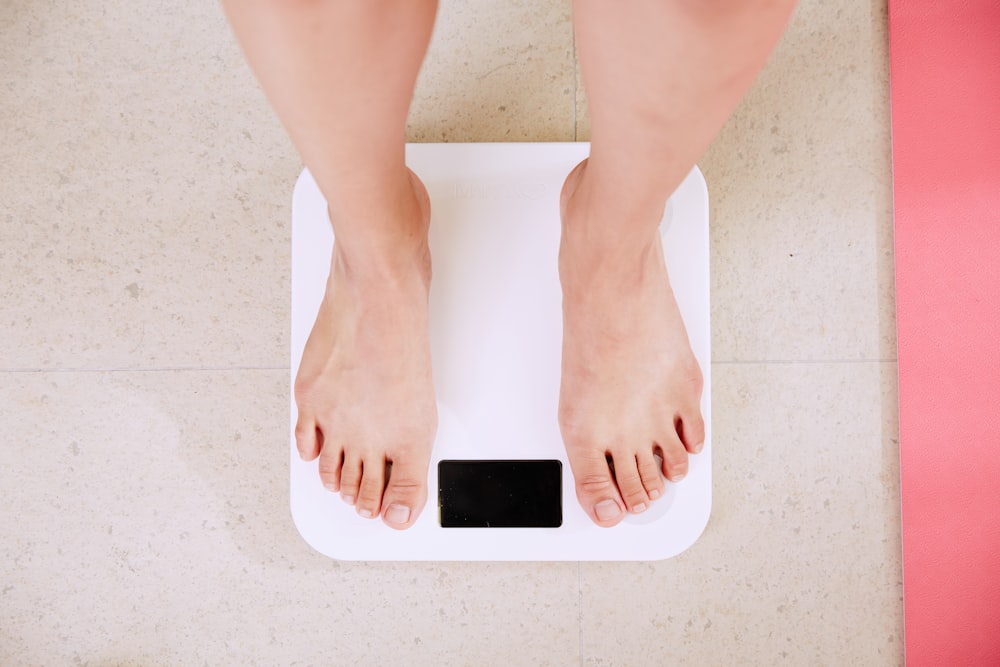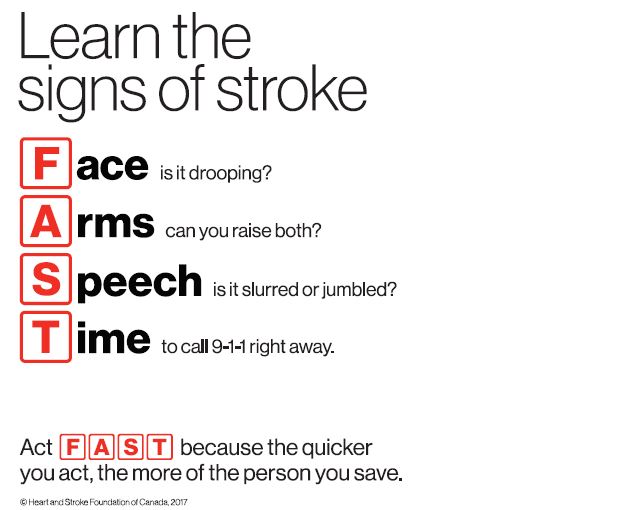Reduce Your Stroke Risks

Do you know how many adults have experienced a stroke? In Canada alone, the Heart and Stroke Foundation reported that more than 62,000 cases of stroke occur in Canada every year, and that number continues to skyrocket, leaving more than 405,000 people in North America suffering from the effects of stroke. Given these facts, the need for education to prevent stroke has become crucial since this condition is highly preventable—yes, you may be able to prevent stroke or reduce your stroke risks.
What is a stroke?
Brain attack, commonly known as a stroke, occurs when something like a blood clot blocks the blood supply to any part of the brain, preventing the brain tissue from receiving enough oxygen. It can also happen when a blood vessel in the brain bursts, causing bleeding in the brain. In either case, certain parts of the brain become damaged. When this happens, it can cause either long-term disability, permanent brain damage, or even death.

Understand the Brain, Understand Stroke
To easily understand stroke, we need to know some basic facts about the human brain.
So, here is what you should know:
The brain controls all functions of the body and basically guides all the organs and systems. It controls our movements, our thoughts, reactions, and emotions. It stores our memories and is the source of our language. Without the brain, breathing and digestion won't also be possible.
Now, to work properly, our brain needs oxygen. On average, the brain weighs about three-pounds and makes up 2% of our total body weight. And here's an important fact, our brain uses 20% of the oxygen we breathe in. The remaining 80% goes to the other organs and cells in our bodies.
To deliver oxygen-rich blood supply to all parts of your brain, we rely on the blood vessels called the arteries. If something hinders the flow of blood, which carries the oxygen to the brain, the brain cells starve to death within minutes because they lack oxygen. This event causes a stroke.
Two Types of Stroke
The manifestations or signs and symptoms of stroke depend on what type of stroke occurred, the amount of damage, and what the part of the brain was affected.
Remember this. There are two types of brain attack or stroke:
Hemorrhagic stroke
The term hemorrhagic comes from the Greek word "haima" (which means blood) and "rhagē" (which implies break or burst). It occurs when a blood vessel, usually an artery, tears and the blood bursts. Blood then pools into the brain cavity and damages the surrounding brain tissue.
Ischemic stroke

Ischemic stroke, on the other hand, comes from the Greek word "iskhaimos," which means "stanching or stopping blood. This condition occurs when blood clots or other particles obstruct the flow of oxygen-rich blood to the brain. A fat build-up, otherwise termed as cholesterol plaque, can also cause an obstruction in the blood vessels.
Stroke Symptoms Depends On The Part of the Brain Affected
Both types of stroke result in brain cell damage. Symptoms of a stroke begin to show in accordance with the parts of the body controlled and guided by those brain cells. Let's say the front part of the brain (frontal lobe) gets damaged, if this happens, a decline in thinking skills or difficulty in movement may occur because the frontal lobe is responsible for cognitive functions, as well as control of voluntary movement or activity.
Our brain is divided into the right and left hemispheres. It is also composed of four lobes (sections), namely frontal, parietal, temporal, and occipital. Each of these areas is responsible for different abilities and functions.

Exact symptoms of stroke will depend on the part of the brain affected. See additional information about Brain Lobes and Effects of Stroke below:
Frontal Lobe
- Movement
- Judgement
- Personality
- Reasoning
- Other cognitive functions
Parietal Lobe
- Ability to be aware of oneself in space
- Sensation
Temporal Lobe
- Memory
- Sensory input such as hearing
- Speech or Language
Occipital Lobe
- Colour determination
- Formation of memory
- Object and face recognition
- Perception of distance and depth
- Vision
The symptoms of stroke can also be categorized depending on what hemisphere of the brain is affected. In general, the key idea is if the left hemisphere of the brain suffers from hemorrhage or ischemia, the right side of the body is affected and vice versa. For instance, an individual with a left-sided brain attack or stroke may be weak or not be able to move the right side of the body.

Stroke risk factors
The term predisposing factors and precipitating factors may confuse some because they are often used interchangeably. While both factors can be grouped as general risk factors of stroke, some prefer to know the difference between them. So, let us discuss what can cause a stroke.
Predisposing factors of stroke
Predisposing factors are those that put any individual at risk of developing a stroke (for example, chronic kidney disease [CKD] or obesity and metabolic syndrome).
Precipitating factors of stroke
Precipitating factors pertain to the specific event to the onset of the current problem or the situation or condition that triggered the stroke. This may include alcohol abuse, fluctuations in temperature, infection, psychosocial stress, and other environmental factors.
Reduce Your Stroke Risks: How to Prevent a Stroke from Happening
The Harvard Medical School published an article on ways to prevent a stroke from happening. This includes controlling blood pressure and blood sugar levels, as well as becoming more active. In addition to these tips, we also browsed various medical books and government sites such as the Public Health Agency of Canada to help you reduce your stroke risks. So, here are the things you can do to remain stroke-free:
Know how to control your blood pressure.
Why does hypertension or high blood pressure increase your risk of stroke?
The UK Stroke Association says that having persistently high blood pressure puts stress and extra strain on our bodies' blood vessels. This can either cause ischemic or hemorrhagic stroke.
How can hypertension result in ischemic stroke
Chronic hypertension can cause ischemic stroke when the blood vessels weaken or become damaged. Instead of being elastic, they become stiff — slowing down the flow of blood to the organs, including the brain. Aside from weakening blood vessels, high blood pressure also makes the blood vessels more vulnerable to cholesterol plaque build-up or atherosclerosis, which further restricts the blood flow to the different parts of the body. If a part of this plaque formation dislodges and travels to the brain, an ischemic stroke can occur.
How can hypertension result in hemorrhagic stroke
The World Heart Federation mentions in their website that high blood pressure can result in a hemorrhagic stroke (bleeding in the brain) when a weakened blood vessel in the brain bursts and the blood leaks into the brain.
If you do smoke, stop as soon as possible.
One study says that cigarette smoking can increase the risk of all types of stroke. The nicotine and carbon monoxide that you inhale from smoking can enter the bloodstream.

The nicotine increases the heart's workload, makes the heart beat faster, and aggravates high blood pressure. The carbon monoxide, on the other hand, competes with all the nutrients that the blood carries. Over time, this carbon monoxide reduces the amount of oxygen that the blood vessel delivers to the different parts of the body. You can find out more about smoking and the risk of stroke here.
Maintain a healthy weight.
The World Stroke Organization says that carrying too much weight increases your risk of stroke because it can predispose you to having consistently high blood pressure, high cholesterol, heart disease, or type 2 diabetes. In fact, they estimated that being overweight increases your risk of brain attack by 22%, and if you are obese, the risk of experiencing stroke episode increases by 64%.
Be more active.
Physical inactivity is one of the most common behaviours that can increase the risk of stroke. As a matter of fact, a research validated that it is a strong risk factor for stroke in the elderly. Furthermore, they postulated that physical inactivity causes changes in the endothelial (membrane that lines the inside of the blood vessels) function and vascular reactivity (how the blood vessels alter their diameter and tone to make adjustments in blood flow.
Moreover, according to the Centers for Disease Control and Prevention (CDC), regular physical activity is essential because it can reduce your risks for problems that may predispose you to stroke.
Control your cholesterol levels.
You already know that bad cholesterol can contribute to plaque formation, consequently narrowing the lumen of the blood vessels.
Lifestyle changes that may help control the cholesterol levels include:
- Consuming protein-rich plant foods like beans, legumes, nuts, and seeds.
- Eliminating trans fats.
- Exercising.
- Increasing intake of soluble fibre.
- Reducing the intake of food high in saturated fats (example include red meat and full-fat dairy products) since they raise your total cholesterol.
- Taking omega-3 supplements or eating food high in omega-3 fatty acids.

Address problems that may predispose you to stroke.
If you have existing medical problems that may predispose you to stroke, consult with your health care provider to control your stroke risks.
Conditions that Increase Your Risk for Stroke
Here are some of the medical problems or conditions that may increase your risk for stroke:
- Diabetes
- Heart Disease such as coronary artery disease, enlarged heart chambers, heart valve defects, irregular heartbeat
- High Blood Pressure
- High Cholesterol
- Pre-eclampsia - a pregnancy complication characterized by hypertension after 20 weeks of pregnancy
- Previous stroke attack
- Sleep Apnea - a medical condition that results in cessation of breathing while you sleep
- Sickle Cell Disease - set of blood disorders that distort the shape of red blood cells into a sickle or crescent, shape thereby reducing the amount of oxygen that the red blood cells can carry
- Vascular Cognitive Impairment (VCI) - a disorder of the mind caused by tiny clots that block small vessels in the brain or blood vessel wall disease
Explore more information on Condition Risk Factors for Stroke on Heart and Stroke Foundation of Canada.
Maintain healthy blood sugar levels.

Research indicates that diabetes or high blood sugar levels can cause changes in blood vessels (for example, stiffness of the arteries). It can also trigger a cascade of atherosclerosis (plaque build-up) and cause systemic inflammation, further restricting the blood flow to the brain.
If you love to drink alcoholic beverages, please do so in moderation.
Drinking a lot of alcoholic beverages can contribute to persistent high blood pressure levels. It can also increase the levels of a fat that can harden the arteries called triglycerides.
The key is:
- Men should not drink alcoholic beverages more than twice a day.
- Women should not drink alcoholic beverages more once a day.
Resort to a healthy diet that is low in sodium and rich in potassium.
Both sodium and potassium are essential. They are electrolytes that the human body utilizes to function normally. They also help maintain the volume of blood and other fluids in the body.
Too much sodium (salt) in the body can result in higher blood pressure levels. Potassium, on the other hand, lessens the effects of salt.
So, trim your salty food intake and consume more potassium instead.
Avoid food sources high in sodium, such as:
- Buttermilk and processed cheese
- Frozen dinners or breaded meats
- Junk foods
- Prepackaged mixes
- Processed and canned foods
- Seasonings
- Salted nuts
- Soy sauce
Remember these foods. Cut down your intake as necessary.
Increase intake of potassium-rich foods like:
- Almonds
- Apricots
- Artichoke
- Baked Potato
- Baked Sweet potato
- Banana
- Beans
- Beets
- Broccoli
- Brussels sprouts
- Cantaloupe
- Cashew
- Clams
- Dates
- Dried beans and peas
- French fries
- Beef, ground
- Haddock
- Hazelnuts
- Lentils
- Lima beans
- Milk (buttermilk, low-fat, skim, whole)
- Nectarine
- Orange
- Orange juice
- Parsnip
- Peanuts
- Perch
- Plain yogurt
- Prunes
- Pumpkin
- Raisins
- Salmon
- Sunflower Seeds
- Spinach
- Tomatoes, canned
- Tomato, fresh
- Turkey
- Vegetable juice
- Winter squash
- Zucchini
Foods that prevent stroke? Try these High-Potassium Foods.
Know the "Stroke Warning Signs" and the proper way to respond when they happen.
The signs and symptoms of stroke apply to both men and women. They can happen suddenly or come and go for a couple of days. These manifestations may include:
- Difficulty speaking or trouble understanding what other people say.
- Dizziness or loss of balance
- Numbness or tingling sensation
- Weakness on one side of your body (left if the right hemisphere of the brain is affected and vice versa)
- Vision problems in one eye or both, such as double vision, blurry vision or being unable to see anything
Source: https://www.canada.ca/en/public-health/services/diseases/heart-health/stroke/signs-symptoms-stroke.html
Learn the signs and symptoms of stroke, because the quicker you act, the higher the chances you have to save your brain tissues from dying.
WHAT IS THE PROPER WAY TO RESPOND WHEN A STROKE HAPPENS?
So, what should you do if you or someone you know is having a stroke?
Call 911.
If you or someone you know manifests any of the warning signs listed above, call your emergency care provider right away. Survival and recovery depend on the first four and a half hours after stroke. These few hours are crucial for getting medical attention. If seen immediately, medications may help to undo or at least reduce the effects of the brain attack.
Don't drive if you think you might be experiencing a brain attack.
Never try to drive if you think you might have a brain attack. Always use the ambulance instead. You may be able to hop in inside the car, but what you may not realize is that the symptoms can get worse.
Have someone accompany you.
If it is possible, ask someone to stay with you at all times, especially while you are experiencing the symptoms. They can take note of the important details regarding your symptoms, which can be relayed to the primary care provider.
Do not wait, rush to the hospital as soon as you feel any warning sign.
Ideally, you should be at the emergency department within the first few minutes or the first hour after the onset of your symptoms.
Never do the following:
- Check if you will have any pain, because there may be no pain when a stroke happens.
- Lie down or sit to rest the symptoms out
- Wait to see if the symptoms go away on their own
Go to the hospital.
Rush to the hospital even if you think that more than four and a half hours have passed or even if the signs and symptoms have disappeared.







